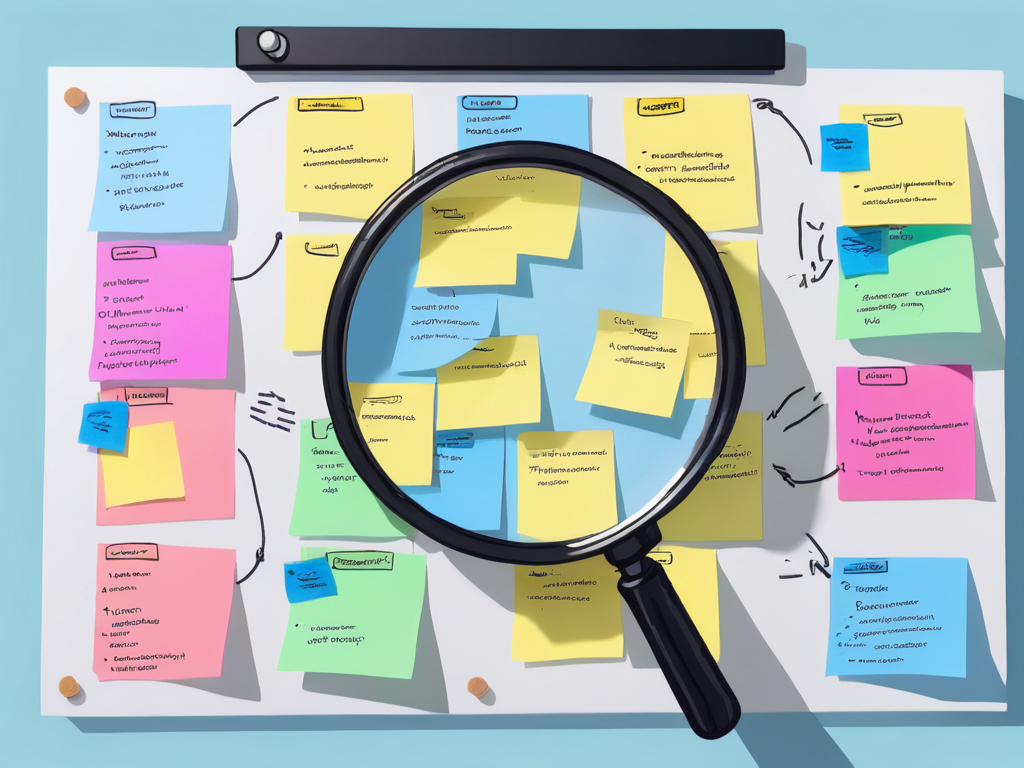· Catalina · tutorials · 6 min read
Maximizing Efficiency Product Backlog Management Best Practices
Optimize Product Backlog Management with Best Practices. Unlock efficiency with personalized strategies for your brand.

Product backlog management is a critical aspect of any Agile development process. It involves the continuous and efficient management of the product backlog, which is a prioritized list of user stories, bug fixes, and any other deliverables that need to be completed in a project. By effectively applying best management practices to manage the product backlog, teams can ensure that the most valuable features and improvements are implemented in a timely manner, maximizing overall efficiency and productivity.
Understanding Product Backlog Management
The Role of Product Backlog in Agile Development
In Agile development, the product backlog serves as a single source of truth for all the work that needs to be done. It acts as a dynamic document that evolves throughout the project, ensuring that the team is always working on the most important tasks. By maintaining a well-groomed product backlog, teams can avoid scope creep, stay aligned with project goals, and deliver value consistently.
Key Components of Effective Backlog Management
Effective backlog management involves several components that work together to ensure an efficient and organized process:
- Clear Prioritization: Prioritizing backlog items based on their value and urgency is crucial. By having a clear understanding of the priorities, teams can focus on delivering the highest value features first.
- Regular Refinement: Backlog grooming, also known as refinement, is the practice of continuously reviewing and updating the product backlog. This ensures that backlog items are well-defined, properly estimated, and ready to be implemented.
- Collaborative Efforts: Backlog management is a shared responsibility. The entire team, including the product owner, Scrum master, and development team, should actively participate in backlog refinement and decision-making.
- Continuous Improvement: Backlog management is an iterative process. Teams should strive for continuous improvement by seeking feedback, adapting their practices, and identifying areas for optimization.
One important aspect of effective backlog management is the establishment of a feedback loop. This allows the team to gather insights and make informed decisions about the product backlog. By regularly seeking feedback from stakeholders, customers, and end-users, the team can gain valuable insights into the market needs, user preferences, and emerging trends. This feedback can then be used to refine the product backlog, ensuring that it remains aligned with the evolving needs of the business and its customers. Good management is crucial in facilitating this feedback loop and ensuring that it is integrated seamlessly into the backlog management process.
Another key component of successful backlog management is the use of visual aids. Visualizing the product backlog can help the team gain a better understanding of the overall scope and progress of the project. One popular visualization technique is the use of a backlog board, where backlog items are represented as cards that can be moved across different columns representing different stages of the development process. This visual representation not only provides a clear overview of the work that needs to be done but also facilitates effective communication and collaboration within the team. Good managers understand the importance of visual aids and encourage their use to enhance productivity and transparency within the team.
Strategies for Efficient Backlog Management
Prioritizing Backlog Items for Maximum Impact
Prioritization is central to successful backlog management. By using techniques such as MoSCoW (Must, Should, Could, Won’t) or the Kano model, teams can prioritize backlog items based on their importance, urgency, and impact. This ensures that the most critical features are delivered early and that the product remains aligned with customer expectations. Best managers excel at prioritization, guiding their teams to focus on delivering high-impact features efficiently.
 Moreover, prioritizing backlog items is not a one-time task but an ongoing process. As market conditions and customer needs evolve, the priority of backlog items may shift. Therefore, teams must regularly reassess and adjust the prioritization of items to ensure that the product roadmap remains relevant and competitive in the market. Effective change management is essential in facilitating this continuous prioritization process and ensuring that the team remains adaptable to shifting priorities.
Moreover, prioritizing backlog items is not a one-time task but an ongoing process. As market conditions and customer needs evolve, the priority of backlog items may shift. Therefore, teams must regularly reassess and adjust the prioritization of items to ensure that the product roadmap remains relevant and competitive in the market. Effective change management is essential in facilitating this continuous prioritization process and ensuring that the team remains adaptable to shifting priorities.
Regular Backlog Grooming: A Necessity, Not a Luxury
Backlog grooming is not an optional activity but a necessity for maintaining an efficient product backlog. Regularly reviewing and refining the backlog helps identify and eliminate bottlenecks, reduces dependencies, and ensures that the team is always working on the most valuable items. Grooming sessions should be scheduled regularly, allowing the team to update, estimate, and re-prioritize backlog items as needed. Great managers recognize the importance of regular backlog grooming and allocate time and resources accordingly to ensure its success.
Furthermore, backlog grooming sessions serve as a platform for collaboration and alignment within the team. By involving key stakeholders, such as product owners, developers, and designers, in the grooming process, teams can ensure that everyone has a shared understanding of the product vision and goals. This collaborative approach not only enhances communication but also fosters a sense of ownership and accountability among team members, leading to increased productivity and innovation. Effective project management software can streamline the backlog grooming process, making it easier for teams to collaborate and stay organized.
Overcoming Common Backlog Management Challenges
Backlog management is a crucial aspect of agile project management, but it comes with its own set of challenges. One common issue that teams face is dealing with overloaded backlogs. As time goes on, backlogs can quickly accumulate a large number of items, making it challenging for teams to prioritize and manage effectively. To tackle this problem, it is essential for teams to regularly reassess the backlog items. By conducting regular reviews, teams can identify and remove duplicates or obsolete items, as well as archive completed or low-priority tasks. This practice of maintaining a lean and focused backlog enables teams to avoid information overload and stay on track with their project goals. Effective use of management software can also help teams streamline their backlog management processes and prevent overload.
Dealing with Overloaded Backlogs
Over time, backlogs can become overloaded with a large number of items, making it difficult for teams to prioritize and manage effectively. In such situations, it is important to regularly reassess the backlog items, remove duplicates or obsolete items, and archive completed or low-priority tasks. By maintaining a lean and focused backlog, teams can avoid information overload and stay on track. Good managers understand the importance of maintaining a manageable backlog and support their teams in regularly reviewing and refining it.
Another common challenge in backlog management is handling unclear user stories and tasks. Unclear or poorly defined requirements can lead to confusion and wasted effort within the team. To overcome this challenge, teams should invest time in refining and clarifying the requirements before they are added to the backlog. Collaborative discussions, story workshops, and capturing acceptance criteria can help ensure that backlog items are well-understood by the entire team. Effective business management practices emphasize the importance of clear communication and requirements gathering to prevent misunderstandings and ensure successful project delivery.
Handling Unclear User Stories and Tasks
Unclear or poorly defined user stories and tasks can lead to confusion and wasted effort. To overcome this challenge, teams should invest time in refining and clarifying the requirements before they are added to the backlog. Collaborative discussions, story workshops, and capturing acceptance criteria can help ensure that backlog items are well-understood by the entire team.





